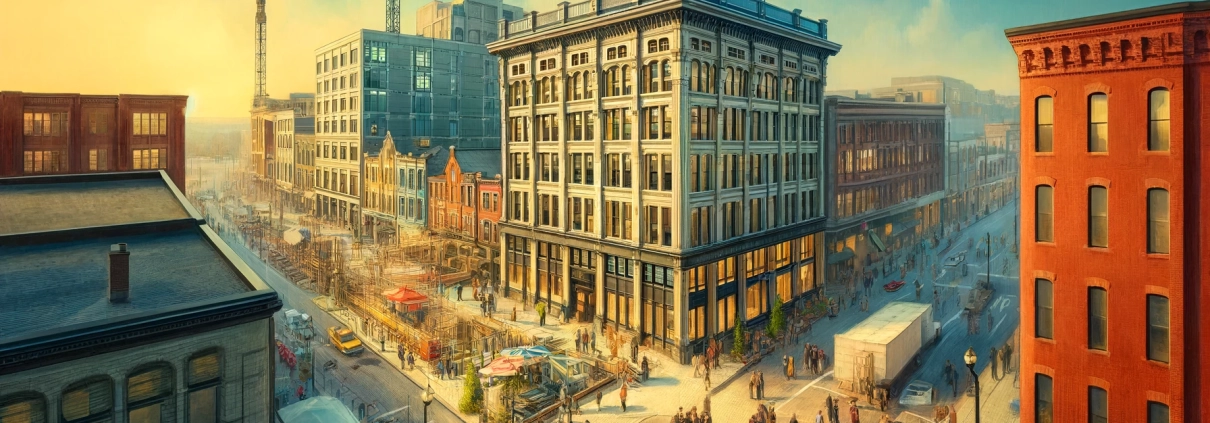Urban Infill
Repurposing property in an urban environment for new development. The term implies that the surrounding area is mostly built up and what is being developed will “fill in” the gaps. Urban infill usually focuses on repositioning underutilized buildings, often part of a community redevelopment program.
Putting ‘Urban Infill’ in Context
Urban Revive Developers, a real estate development firm known for its value-add and opportunistic redevelopment projects, recently embarked on an urban infill project in the vibrant downtown area of Raleigh, North Carolina. The project, named The Foundry at Glenwood, aims to reposition a once underutilized three-story building into a state-of-the-art creative office space, leveraging the charm and location of the historic structure.
Project Highlights:
- Location: Situated in a fully developed urban area with high foot traffic and surrounded by residential buildings, shops, and cultural venues.
- Design: Retaining the historic façade, the interior will be completely gutted and redesigned to feature open-plan offices, collaborative spaces, and green building technologies.
- Community Impact: As part of a broader community redevelopment program, this project aims to revitalize the neighborhood, increase property values, and attract further investments into the area.
The redevelopment is anticipated to cost approximately $15 million, with projected post-development valuation estimated at $30 million, based on the enhanced rental income potential and the high demand for modern office spaces in the area. The expected completion of the project is within 24 months, with a projected lease-up period of another 12 months to reach full occupancy.
Financial Perspective:
- Initial Purchase Price of the Property: $9 million
- Total Development Costs: $15 million (including soft costs and contingency)
- Projected Gross Effective Income: $2.4 million annually upon full occupancy
- Operating Expenses: $600,000 annually
- Net Operating Income (NOI): $1.8 million annually
- Projected Cap Rate: 6%, based on current market trends in the area
This urban infill project by Urban Revive Developers not only fills the gap in the existing urban landscape but also serves as a catalyst for further urban renewal and economic vibrancy in downtown Raleigh.
Frequently Asked Questions about Urban Infill in Commercial Real Estate
What is urban infill in real estate?
Urban infill refers to repurposing property in an urban environment for new development, typically to “fill in” gaps in already developed areas. It often involves repositioning underutilized buildings.
What type of properties are typically involved in urban infill projects?
They usually involve underutilized or vacant buildings within dense, built-up urban neighborhoods, often tied to community redevelopment programs.
What is an example of an urban infill project?
The Foundry at Glenwood in downtown Raleigh, NC, by Urban Revive Developers, is a notable example. It involves redeveloping a three-story historic building into modern creative office space.
How does urban infill benefit the community?
Urban infill projects contribute to revitalization, property value increases, and attract further investment by enhancing the built environment and providing modern, usable space.
What were the financials of The Foundry at Glenwood project?
Purchase Price: $9 million
Total Development Costs: $15 million
Projected NOI: $1.8 million
Projected Post-Development Valuation: $30 million
Target Cap Rate: 6%
How long is the expected timeline for the Raleigh urban infill project?
The project has a 24-month construction period, followed by a 12-month lease-up phase to reach full occupancy.
Where can I learn more about related development terms?
See the related glossary entries for Specifications Manual and Central Business District, or explore the Graduate Real Estate Series in the Related Content section.
Where can I download the full CRE Glossary?
Click the link in the post that says “Click here to get this CRE Glossary in an eBook (PDF) format.”
Click here to get this CRE Glossary in an eBook (PDF) format.

